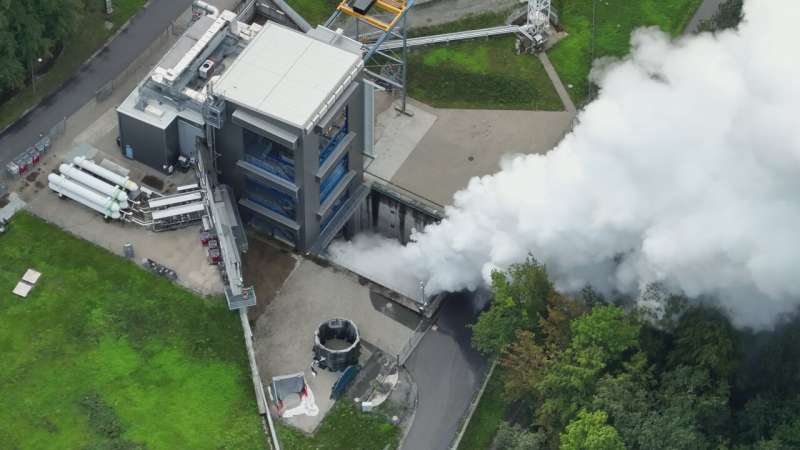Vinci, the upper stage engine of Ariane 6 fed by liquid hydrogen and oxygen, can be stopped and restarted multiple times—to place satellites into different orbits and then de-orbit the upper stage, so it is not left behind as hazardous debris in space. The APU makes it possible for Vinci to restart in space, by maintaining adequate pressure in the fuel tanks and preventing bubbles in the fuel lines. The APU uses small amounts of liquid hydrogen and oxygen from the main tanks—replacing a system which relied on large quantities of tanked helium.
A last hot-fire test is scheduled before final qualification of the Ariane 6 upper stage, with the aim of testing its operation for different types of missions, as well as in degraded conditions.
ESA Director of Space Transportation Toni Tolker-Nielsen thanked partners at DLR and Ariane 6 prime contractor ArianeGroup, who are running the tests at Lampoldshausen. "Ariane 6 represents a dramatic increase in our launch capability, and the upper stage with its reignitiable Vinci engine will be transformative. The results from these tests gives us great confidence in the flexibility of this launch system to satisfy all mission requirements. Together with our partners we are making significant progress, and I look forward to the next stages of our Ariane 6 journey," Tolker-Nielsen said.
The tests at Lampoldshausen are being run in parallel with tests on the launch pad at Europe's Spaceport in French Guiana. There, Ariane 6's lower core stage engine—Vulcain 2.1, adapted from Ariane 5's Vulcain 2—is being test-fired to simulate an actual launch. Launch pad tests feature a test model of the 60-m tall Ariane 6. This rocket is not intended to fly but is essentially identical to a flight model apart from its solid fuel boosters, which are inert mock-ups. These tests will ensure that the rocket and ground infrastructure work together as a complete system.
Provided by European Space Agency



